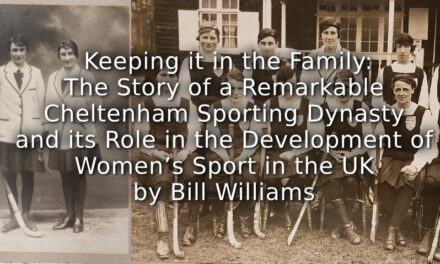Foden Ladies Football Team are synonymous with women’s football in Cheshire but they were not the first ladies team to take to the pitch in the county. The emergence of a football culture among women in the local munitions factories during the Great War saw a number of matches, with a fierce local partisan following, played out for charity. These games were both inter-departmental matches within works, such as those from the Electro Bleach and By Products Ltd based at Cledford in Middlewich, and matches between rival teams of ‘Munitionettes’ representing the various Cheshire based works. This two part series uses the newspaper accounts of these matches to create a story of women’s football in parts of Cheshire from 1917 until the start of World War II.
NB: The vernacular of the period invariably used the terms ladies, girls, lasses, lassies and damsels to refer to participants in women’s football and this article reflects that practice in its use of terminology. Similarly, the language of this article stays faithful to the sources.
The first reported match played by the munition workers of the area took place in April 1917. Never before, the reporter ventured to think, had such a novel football match been played at Middlewich. Organised for the benefit of the local Red Cross Fund, the opposing teams of ‘girl munition workers’ were from Electro Bleach, who had been in strict training for several weeks, in fact practically all of their spare time was spent getting fit. The match took place on a field near the works and in view of the splendid object for which it was organised, it was encouraging to see such a good gate. The teams, the Shed Girls and the Yard Girls, were clad in munition uniforms and Mr Jones, one of the managers, provided the ball and kicked off the match.
- General view of the Electro Bleach and By-Products Factory in Cledford, Middlewich
The game itself, was reported to have ‘smacked more of the Rugby code than “Soccer”, but the referee was not too exacting. The girls were out for fun and got it.’ The struggle for possession of the ball was waged in a fast and furious manner with a high pitch of excitement being reached when the ‘Shells’ scored three times in as many minutes, which remained the score at the final whistle, the Yard Girls having to acknowledge they were well beaten. The proceeds, including subscriptions, amounted to about £10. Both teams were treated to coffee at the interval and tea was served after the ‘battle’.
At the end of May the women from Electro Bleach were in action again, having been challenged by the Lostock Lady Workers to a match to raise money for the Victoria Infirmary at Northwich. The game, which was the Lostock team’s debut, took place on the ‘historic turf of Northwich football’, the Drill Field, with the ‘popular manager’ of the Middlewich works, Mr F R de Harden-Jones, providing a silver cup for the winners. This cup, referred to in later matches as the Harden Cup, would be played for many times, with winning teams in the 1920s referring to themselves as Champions of Cheshire.
‘What a sight’, with all sections of the Middlewich and Lostock society, numbering between 3,000 and 4,000, assembled to watch ‘22 lusty maidens battling for the honour of their works and their respective town and village.’The women took to the field for the battle royal in ‘customary attire’, striking costumes of red and white jerseys and white knickers for the Electro Bleach side, while the Lostockians were decked out in blue and white striped jerseys with blue knickers and blue woollen caps – both sides reported as not being adverse to displaying a ring, bangle or other jewels.
The ‘dark horses’ of Lostock had obviously had someone to put them through their paces and teach them the tricks of the trade to some perfection, as they were considered the more superior side, as football players, by the reporter, who added, ‘though, of course, if it came to good looks – well,- you would take your choice.’ The hubbub of feminine shrieks exhorting Maggie to ‘Play up!’ or encouraging Nellie to ‘Kick it Though!’ drowned out the mere men in the crowd, some of who were declined to take it seriously. There was however seriousness to spare amongst the ‘fair damsels’ who struggled and perspired, ran and tumbled, kicked and carvorted, all for sport and charity.
The Lostock Workers, ‘the heavier, lustier, heftier set of lasses’, were two goals to the good by the interval, even if some of their play was not strictly in accordance with the code and a sort of ‘thrilling uncertainty’ prevailed as to which direction a headed ball would take, with elbows rather than craniums making contact with the leather. At one point one of the Lostock players raised her hand to save her face, a pusillanimous act that induced a flurry of unsuccessful protests to the referee. Cries of ‘Did yer ever see such a durty lot o’players’ rung out, although which side was being referred to was beyond the reporter, who admitted he ‘wouldn’t have been in the shoes of the referee…for a weeks pay.’ The second goal caused some controversy as, having been deflected into the goal by the upright, was thrown out again by a spectator. The referee pointed to the centre of the field, but had not reckoned on the womenfolk who contested the decision to the point where some of the Middlewich players looked like they might have left the field, although such ‘discharges of steam had a salutary effect’ and the women soon continued ‘in the same spirit that they are tackling their job to help the lads in the trenches.’
On the nine-minute mark in the second half Lostock added a third goal and following a penalty awarded against Middlewich for hands, the Middlewich goalkeeper, Miss E Ketteridge, saved a rasping shot. The fourth goal fell to Nellie Leadbetter and, just on full-time, the ball was shot in by Nellie Lee, saved by the goalie, and volleyed back off one of her own side… ‘Hard lines girls – I weep with ye’, the reported lamented. Thus, the pre-match favourites, Middlewich, were beaten by five goals to love, with some £50 raised for the Victoria Infirmary. The winning team returned to the dressing room cheered and cheering. ‘…Wait till us get yer at Middlewich’ shouted one of the followers of the defeated, at which there was a jeer and the retort ‘And us’ll be there.’
The great day of the rematch arrived two weeks later on Whit-Monday when the whole of Middlewich were confident that she would come to her own again, the day on which the Reds were to resume the ascendancy, temporarily checked by the ‘doughty Lostock Blues.’ News had disseminated far and wide of the pulverisation of Middlewich by Lostock in the football arena, and how eleven brawny lasses from Lostock made rings round a similar number of ‘Muncher’ girls from Middlewich. A great day for Lostock was that, but the Wychers had something up their sleeves when they launched their parting shot at the Drill Field victors – ‘Wait till us get yer at Middlewich.’
With one or two exceptions the teams were the same and in brilliant sunshine, more suggestive of cricket than a football, the teams made their way to Mr Challinor’s field by the railway station. Lavish displays of blue favours were evident but Middlewich, being the home side were not to be outdone and splashes of red predominated. The proceeds of the match were to be given to the local Red Cross Hospital. Once again Mr Harden-Jones got the ball ‘a-rolling’ and it soon became evident that a tough struggle was ahead. Lostock certainly had the advantage, playing down-hill with ‘Old Sol’ on their backs they obviously counted on a substantial lead by the interval. Alas, their hopes were doomed and their supporters offered excuses for their players’ inability to draw blood, ranging from the small ground to the abundance of grass. The excitable cries rose – urging on their blue and white idols to ‘Buck up!’ or ‘Get through with it!’ Suddenly a hush descended over the huge crowd as the referee awarded Lostock a penalty. Visions of victory among the Lostockians were rudely shattered when Edith Ketteridge saved on the post from Nellie Lee, to groans of anguish from the Blues and shrieks of delight from the Reds.
Halftime was rapidly approaching, and the anxiety of the Lostock element increased proportionally as their team failed to pierce the Middlewich defence, which was no doubt responsible, to some extent, for the incident which brought the match to an abrupt end. A penalty was awarded to Middlewich, and, the crowd being so big, some time elapsed before a clear space could be secured behind the goal. Frances Edwards made a good attempt, but the ball was cleared by Kitty McHugh, then came the catastrophe. The referee gave a second penalty, Lostock stoutly objected to the decision and both sides argued, firstly with the referee and then with each other, the referee’s whistle was drowned out in the noise and then to crown it all a group of spectators ran onto the pitch to offer support to their heroines. In the subsequent commotion, the Lostock team left the field, leaving the Reds in possession.
The Middlewich women, not to be done out of their afternoon’s game quickly persuaded several wounded soldiers from the onlookers to form an ad hoc team and an enjoyable half hour’s entertainment ensued. The respective works were represented by a number of managers and officials, who regretted the turn of events, and it was hoped that the teams would ‘kiss and make it up and ‘ere long meet again in friendly rivalry.’ The proceeds of the match were reported to be in the region of £25.
The Lostock Ladies were in action again a few weeks later when they faced another team of Middlewich salt-workers, this time the team from Verdin and Cooke’s who had won the Harden Jones Charity Cup on Whit-Monday. Both teams fancied their chances in this Mid-Cheshire derby and loud cheers greeted the teams as they came onto the arena. A clean, hard fought game, free from any fouls was reported by ‘Curious’, the local Crewe Chronicle correspondent. Lostock came ‘down like wolves’ on the Middlewich goal but failed to score, after which Middlewich began to attack in earnest. Some neat passing and fine control baffled the ‘blue and white lassies’, who found themselves outmanoeuvred and outplayed as the Reds took the lead.
As Lostock started again, encouragement rained down as young Maggie broke past the Middlewich backs, but instead of ‘banging It through’ as advised, she slipped and rolled over the ball. ‘Keep at ‘em’ a Lostock partisan screamed and the blue and whites duly obliged, equalising on the stroke of half-time. After a short respite, the game recommenced in deadly earnest, and great was the jubilation of the Lostockians when they scored and took the lead. ‘Nar we’ll show yer’ shouted a supporter of the Blues ‘Ye’en no won yet’ yelled back the Middlewich throng. And so it proved as Verdin-Cooke’s scored their second and then a third via the penalty spot, leaving the Lostock goalie helpless and setting the Middlewychers dancing with glee. Despite their desperate attempts to equalise the Lostock ladies were disappointed to lose the game by an odd goal in five but consolation was to be had by the fact that the funds of the Victoria Infimary had benefitted considerably.
Ladies football was fast becoming a popular way of raising money for charitable means, as can be seen by the increasing number of adverts in the local press. Advertised among the attractions at the Garden Fete held in aid of the Winsford Hospital on Saturday 23 June 1917 was a Ladies Football Match. Another Fete organised by the same committee was held at nearby Bostock Hall, a favourite venue for such events, the following month which again featured a Ladies Football Match. A snippet in the Runcorn Guardian in July reported that some £68 2s 2½d had been raised for the Victoria Infirmary by the ladies of the Lostock, Electro Bleach and Verdin Cooke works.
-
Winsford Hospital Saturday Procession
Source: Open Winsford
The match at Bostock Hall, under the auspices of the Winsford Hospital Saturday Committee, held on 21 July, saw the ladies from Verdin Cooke’s meet their counterparts from Middlewich Salt. A large crowd was entertained to some good sport for half an hour, in which Verdin’s took the lead by two goals to nil, however a dispute arose and the game was brought to an hasty conclusion by the referee Mr Bryning.
August 1917 saw a plethora of women’s matches across the borough, with Electro Bleach, Verdin and Cooke and Lostock Lady Munition Workers all in action. On Holiday Monday a ‘happy idea on the part of the Working Men’s Committee of the local branch of the NSPCC’ saw Lostock Ladies welcome to the Drill Field a team representing the National Union of Railwaymen (Manchester), No 6 Branch Lady Workers, in order to raise funds for the charity. The promotors of the match had acquired the services of Mr Isaac Baker, the well-known English Cup final referee and Mrs Knightley, the lady superintendent at Lostock, kicked off for Manchester before Lostock took an early lead, in fact barely three minutes had passed.
At the interval Lostock led by three clear goals, during the break the players assembled in the front of the Pavilion, where they received the thanks of Mr J. I. Watts, the Hon. Sec. of the local branch of the NSPCC. He congratulated all the players on their fine form, admitting that it was the first time he had seen a ladies’ football match and he was quite envious, never being able to play in such a way himself. Play resumed, with Lostock being the most aggressive team, Nellie Lee scoring three more goals to add to her earlier two and May Hodkinson netting another. Manchester played briskly at times but were erratic near the goal, with the Lostock goalie Miss Foy seldom troubled. The final result being Lostock seven goals, Manchester nil.
Ladies football matches, the local press testified, had ‘taken hold of the popular fancy’ as once again Verdin Cooke’s faced Electro Bleach, this time in Mr Newall’s field as part of the Albert Infirmary Annual Garden Fete. Mr F. R. Harden-Jones kicked off and a sensational start was made with Verdin Cooke’s scoring in the first few minutes. Aided by the wind they continued to attack and by the interval were winning 3-0. During the second half Electro worked hard, scoring twice. Good spirits and a high standard of football was displayed by both sides, the game considered to be a highlight of the Fete.
-
Albert Infirmary, Winsford
Source: Open Winsford
The following week when Sandbach Hospital and Convalescent Home Fund Committee held their annual pageant and fete at Abbeyfields Red Cross Hospital, a ‘novel football match’ was announced as part of the day’s entertainment; this appears to be the first recorded instance of a women’s football match in Sandbach. Huge crowds lined the enclosure and the excitement of the rival supporters of Verdin’s and the ‘Bleachers’ ran very high; Mr H. H. Lloyd of Offley House kicked off and Verdin Cooke’s immediately showed their superiority, scoring two goals in the first half. ‘Bleachers’ retaliated early in the second period, with their goalie saving well to keep the Verdin girls out. A good ‘ding-dong’ ensued, with Verdin’s adding another, to win the match 3-1. At end of the game, the Hon. Mrs Hindson of Bradwell Hall presented the Handsome Challenge Cup together with gold brooches to the winners, with a gold centre medal for the trainer, and silver enamel brooches to the runners-up, and a silver medal for their trainer.
-
Abbeyfields Red Cross Hospital, Sandbach
Source: Sandbach Past and Present
All was quiet on the women’s football scene in the area until Boxing Day 1917, when local fund raisers took the opportunity of the holiday and held a number of games across the borough, with some local ad hoc works teams taking part. Firstly, the women from Electro-Bleach and Middlewich Salt Co played for the Harden Challenge Cup at the Northwich Western Ground, in aid of hospital funds. The ‘Electros’ had the better first half with star players Doris Manley and May Higginson both scoring and with an unfortunate own goal the ‘Salt Girls’ found themselves 3-0 down at the interval. They fared better after the break and levelled the score by the final whistle. The reporter noting that both teams showed signs of distress by the latter part of the game and mused that perhaps the game should have been an hour with the intermission rather than an hour and a half. Both teams were ‘kindly entertained to tea after the match’ by Mr Harden-Jones.
The novelty of a ladies’ football match attracted a good attendance at the Goddard Street enclosure in Crewe on Boxing Day. The game was for the benefit of the Red Cross Hospital and Crewe Cottage Hospital, who, it was stated, were in great need of financial assistance. The women and girls of Crewe Works, namely those of the Paint Shop and the No 9 Carriage Work Stores, were ready to ‘do their bit’ and had, in their spare time, learnt to play football. The Chief Mechanical Engineer of the London and North Western Railway, Mr C. J. Bowen-Cooke, made it known that no expenses whatsoever would be charged for ‘printing, advertising or the dresses of the players’, in order that both hospitals would benefit to the maximum. Miss Erica Bowen-Cooke kicked off and thanks to a penalty kick scored by Miss V. Condrey, the Paint Shop were leading 1-0 at half time. Just two minutes after the break, another penalty, this time for the Carriage Works levelled the score, but, in reality, although Miss Hope played well in goal, the Paint Shop were a beaten side, eventually losing 4-1. After the match the ball was auctioned and a final total of £56 was shared between the two hospitals.
A few days later at Abbeyfields, in Sandbach, a team of wounded soldiers played a team of unnamed Munitionettes. The players were led onto the field by the Hospital band and Sister Ball kicked off. An interesting game resulted in the Ladies winning 5 goals to 3. After the game the sides had tea together, followed by an impromptu concert, with all proceeds going to the Abbeyfields Hospital funds.
The Crewe Works Ladies turned out again early in the new year, this time the team was drawn mainly from the female employees of the No 9 Stores, with the Misses Condrey, Maelor, Cann and Palin again featuring. They entertained their opponents, the Middlewich Salt Co., at the Goddard Street ground, where Mrs Beams, the wife of the manager of Crewe Works kicked off. The Middlewich workers were victorious 3-1, with all proceeds on behalf of the Crewe Cottage Hospital.
In March 1918, the Nantwich Guardian noted that arrangements for a series of ladies’ football matches were being made for the following month and that several women had signified their intention of joining the scheme, but no other reports on this venture have, to date, been found. Advance notice of a game between Middlewich Salt and Electro Bleach, to be played in Winsford on Whit-Monday for the Harden Challenge Cup appeared in the press in May. In comparison to earlier reports, a very truncated account appeared a week later, the match having aroused much enthusiasm, with each side being well supported. The Salt Co. won 2-1 and were presented with the Harden Trophy by Mr W. H. Verdin, who was accompanied by his bother Sir Joseph Verdin of Garstone Castle. The huge crowd saw the refreshment tents kept very busy with the great demand for liquids, at one time the tea makers being unable to keep pace with the consumption, but luckily, a large number had bought their own ‘rations’, which considerably ‘relieved the burden.’
- A group of Munition Factory Workers from the North-West ready for their football match
The final match reported in the local press before the 1918 Armistice was held in aid of the Red Cross Hospital at Abbeyfields, where in August at the annual Pageant and Fete, the ladies of Verdin Cooke’s beat the Lostock A Shift Ladies by 7 goals to 1 to win the Harden Silver Cup. The match was played on a field on Crewe Road, especially lent for the occasion by Mr E. Holland.
It is notable from this sketch of women’s football in Mid-Cheshire during the last years of The Great War, that a certain novelty factor prevailed in the newspapers. With little or no men’s football to report on, many column inches were dedicated in the local press, to gently ribbing the women players and pointing out their perceived shortcomings and lack of skill, when compared to the men. As the end of the war drew near and many of these women lost their jobs in the munition factories, the teams slowly disbanded, although many retained their interest in the game and carried on playing, as will be seen in Part 2 – Click HERE to read
Article © Margaret Roberts
A list of references is available from the author on request

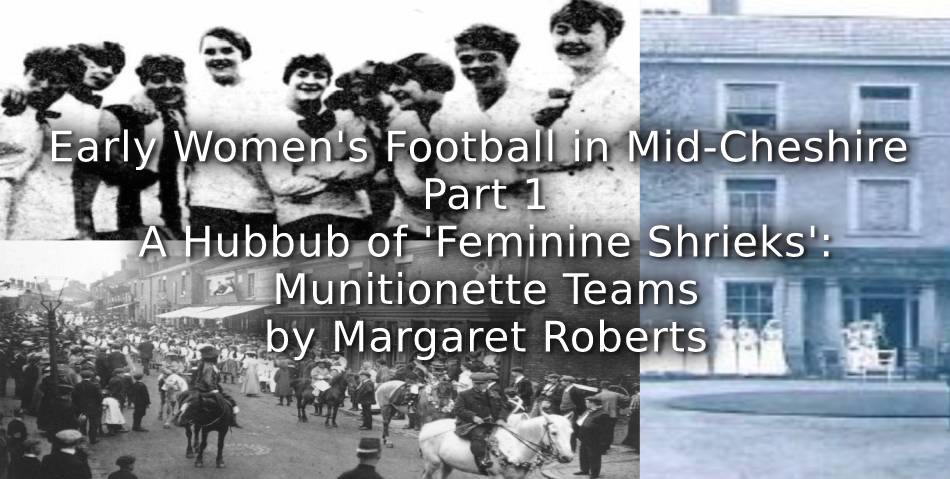
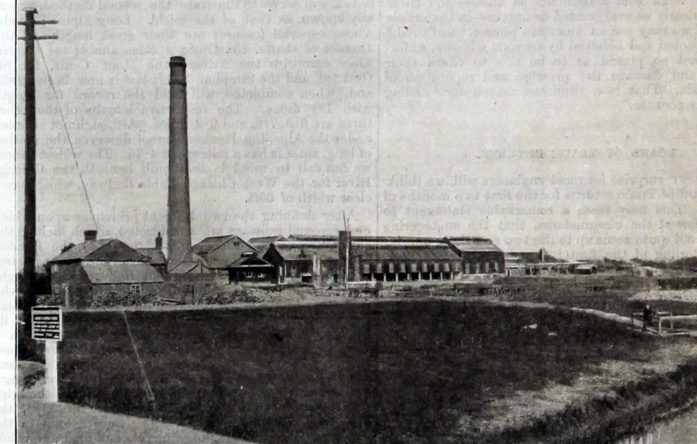


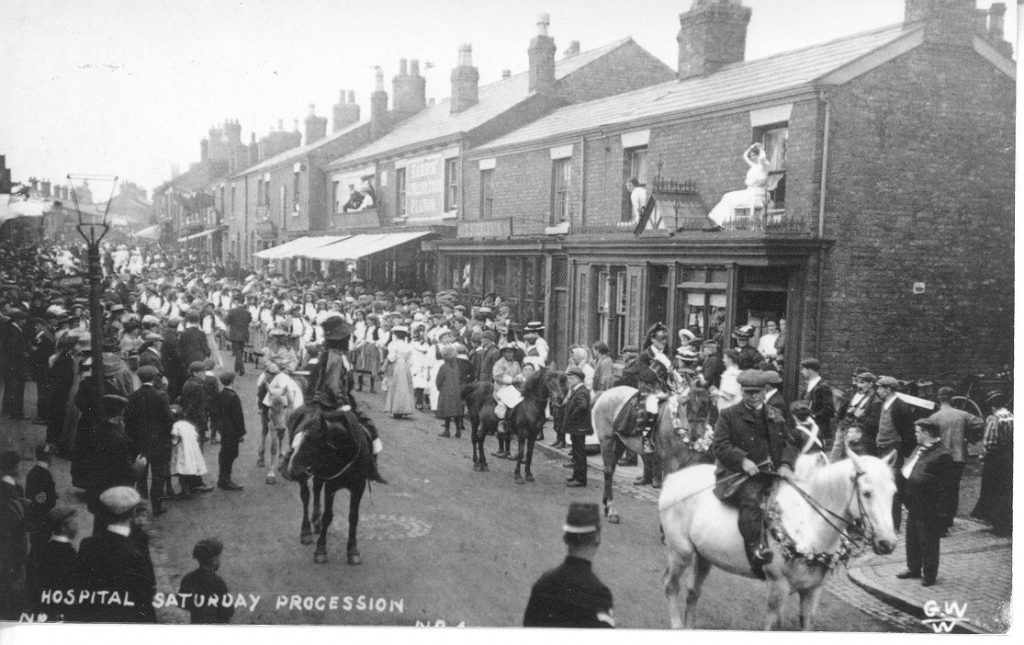
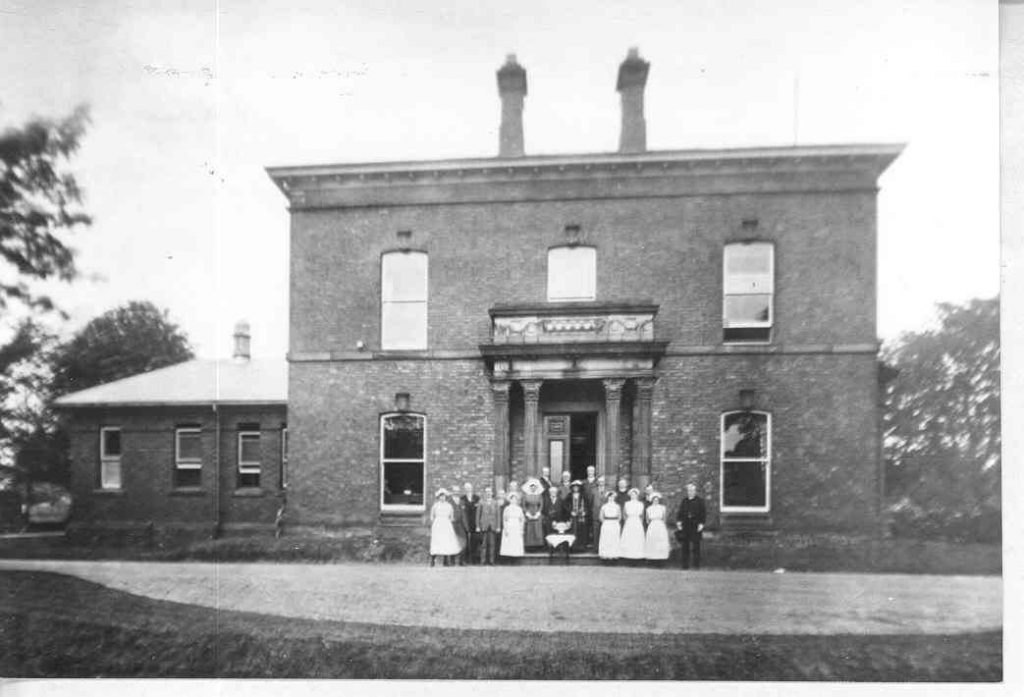
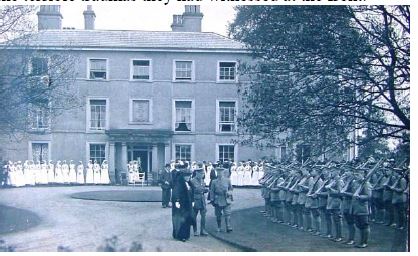

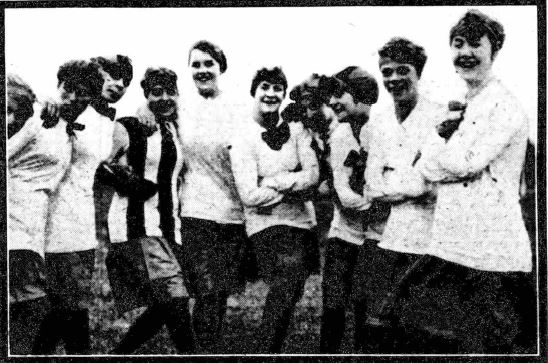
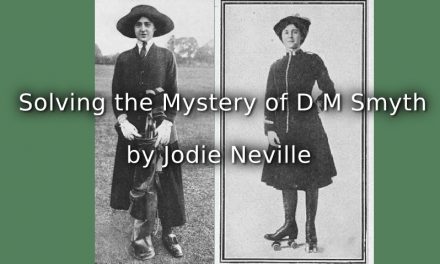
![I, Tonya, Cultural Capital and the American Dream [Spoiler Alert]](https://www.playingpasts.co.uk/wp-content/uploads/2018/02/tonyabanner-440x264.jpg)
